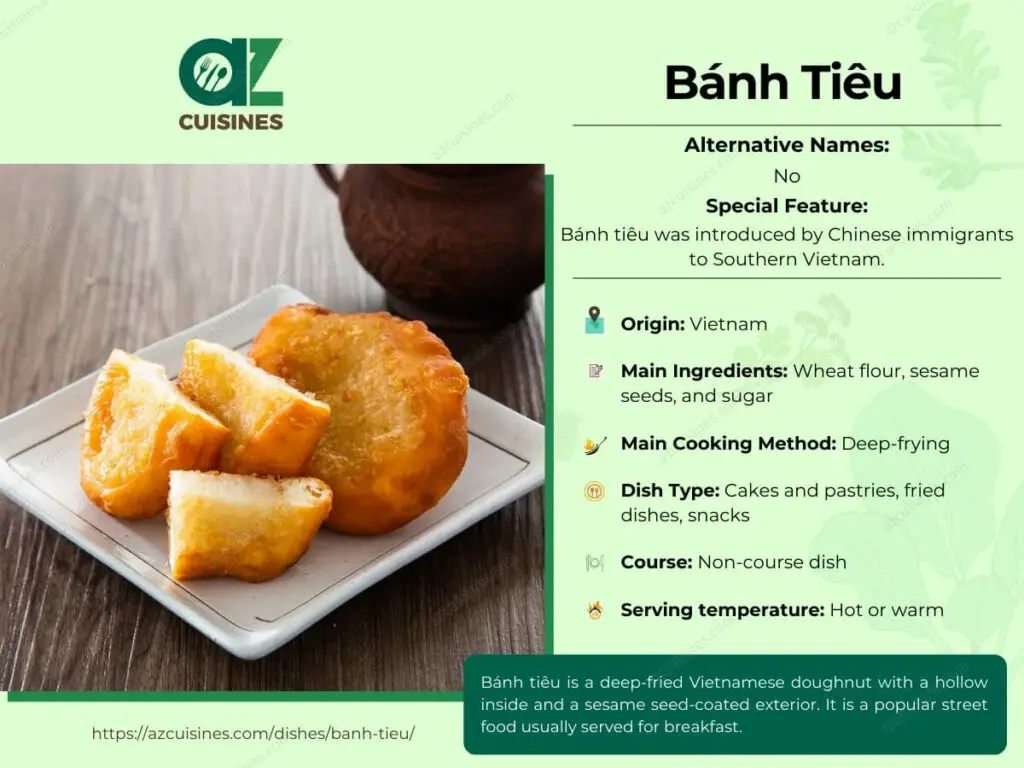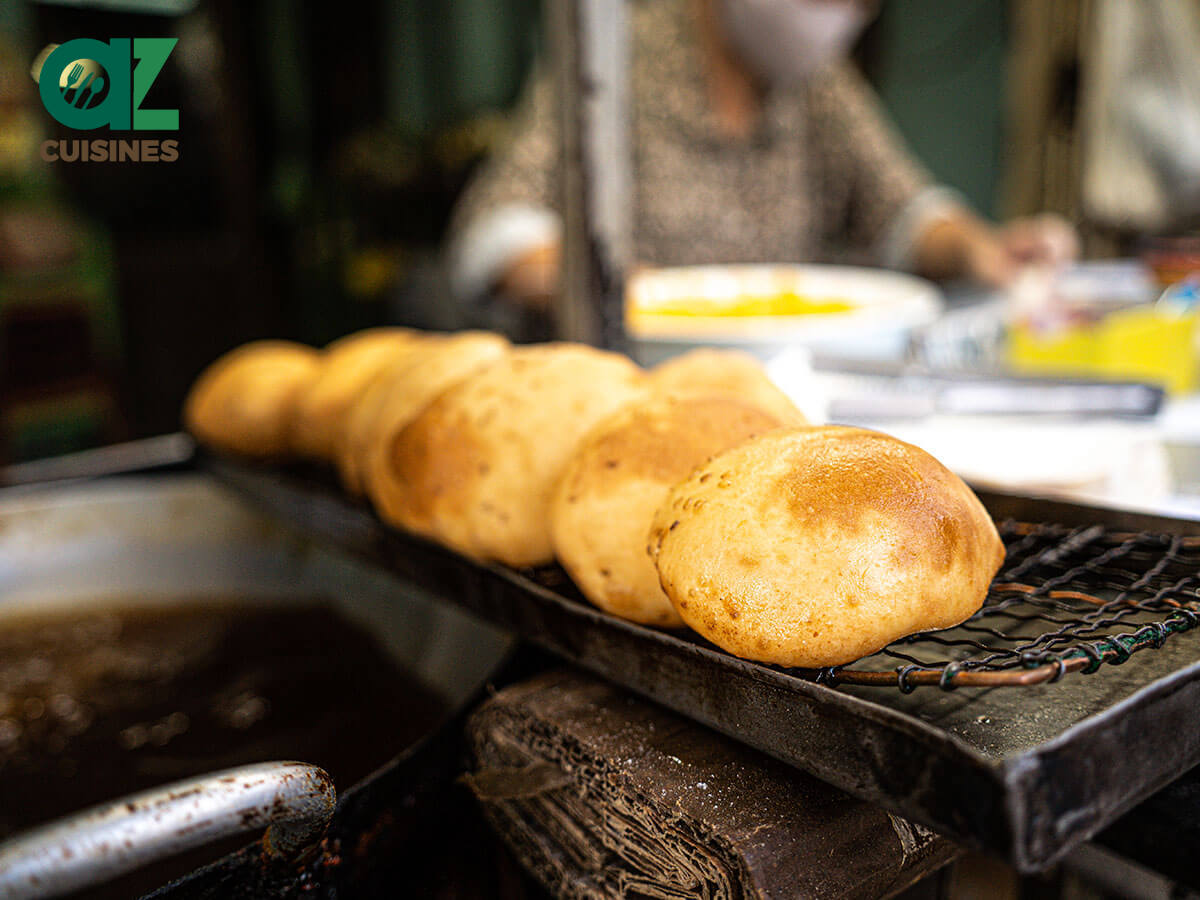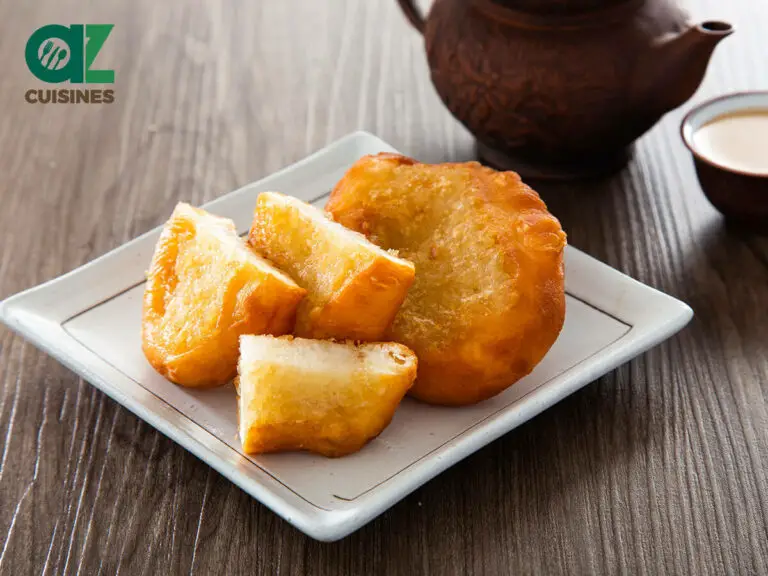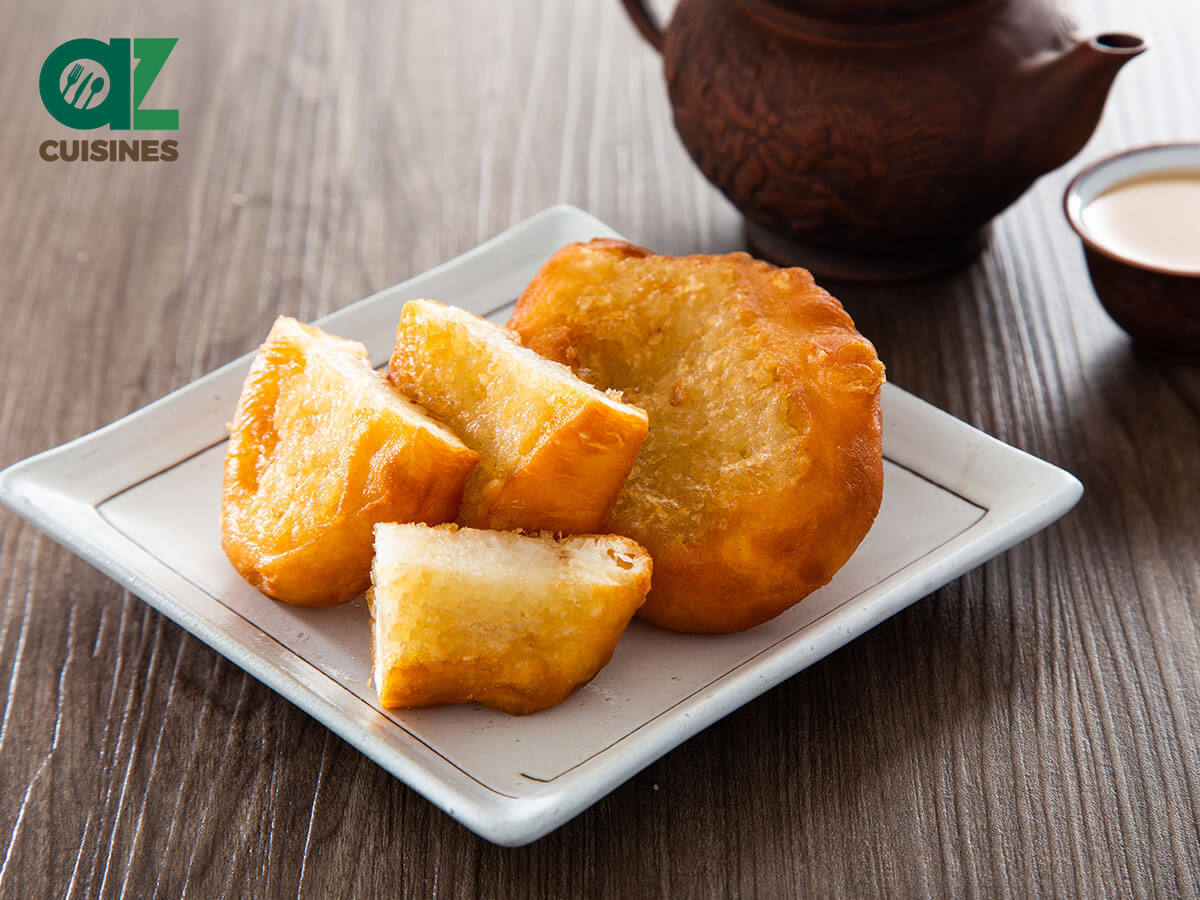#139 in Vietnam
Bánh Tiêu: Basic Information
Pronunciation
Alternative Name(s)
Dish Type
Course
Mealtime
Popular Variations
Bánh Tiêu: Ingredients and Preparation
Main Ingredients
Main Cooking Method
Preparation Process
Bánh Tiêu: A Deep Dive
Cultural Significance
Taste
Texture
Aroma
Color
Serving Style
Serving Temperature
Accompaniment
Occasions
Seasons
Special Diets
Calories
Popularity
Popular Similar Dishes
- Youtiao
- Beignet
- Jian Dui
- Ox-tongue Pastry
Popular Dining Area
Bánh tiêu is a deep-fried Vietnamese doughnut usually coated with sesame seeds. It is based on ham chim peng, a similar dish from China.
Bánh tiêu was originally a Southern Vietnamese breakfast snack and street food, especially in Ho Chi Minh City, but it is now popular in other regions of Vietnam.
Bánh tiêu is hollow inside, but locals sometimes fill it with many types of foods.
Typical fillings include bánh bò (a type of Vietnamese steamed rice cake), xôi (cooked glutinous rice), durian paste, mung bean paste, and adzuki paste.
The name “bánh tiêu” is also the Vietnamese translation of hujiao bing (Taiwanese pepper bun), which is a different dish.
Stay tuned for other fascinating facts about bánh tiêu, a traditional street food in Vietnam, such as its pros and cons, frequently asked questions, and similar dishes.
Key Points
Bánh Tiêu Images
Pros and Cons of Eating Bánh Tiêu
You can experience the following advantages and disadvantages when consuming bánh tiêu.
Pros
Cons
You are now knowledgeable about the plus and minus points of bánh tiêu, but there is still other helpful information to learn about this snack in the FAQs.








Truc Tran (Kris)
Senior Food Editor
Expertise
Home Cooking, Meal Planning, Recipe Development, Baking and Pastry, Food Editor, Cooking-video Maker, Vietnamese Food Evaluation Expert
Education
Truc Tran (Kris), an experienced food writer and editor, is great at exploring and describing global cuisines, from simple street food to fancy dining. In her writing, she skillfully mixes different flavors, cooking methods, and culinary traditions, showing the unique character of various cultures through their food and drinks. On azcuisines.com, Kris highlights her knowledge, especially in Asian cuisine and worldwide traditional dishes.